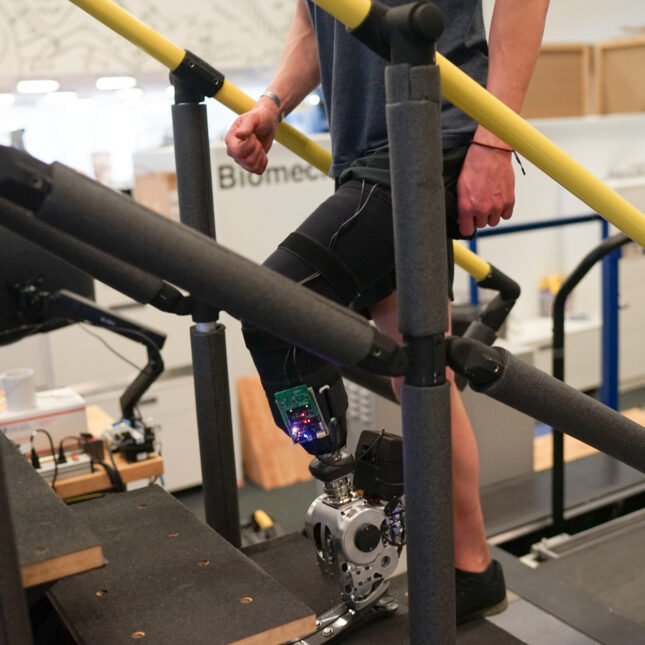
A novel surgical technique could dramatically improve walking for people with below-the-knee amputations and help them better control their prosthetics.
A study published Monday in Nature Medicine showed that trial participants who received the procedure could walk faster, were more stable on uneven terrain, and had an increased spatial awareness, or proprioception, in their residual limb. Phantom pain in their limbs lessened, too.
“If you have intact biological limbs, you can walk up and down steps, for example, and not even think about it. It’s natural, it’s involuntary,” said Hugh Herr, study co-author and head of the biomechatronics group at the MIT Media Lab. “With our patients, even though their limb is made of titanium and silicone, all these various electromechanical components, the limb feels natural, and it moves naturally, without even conscious thought.”

This article is exclusive to STAT+ subscribers
Unlock this article — and get additional analysis of the technologies disrupting health care — by subscribing to STAT+.
Already have an account? Log in
Already have an account? Log in
To submit a correction request, please visit our Contact Us page.











STAT encourages you to share your voice. We welcome your commentary, criticism, and expertise on our subscriber-only platform, STAT+ Connect